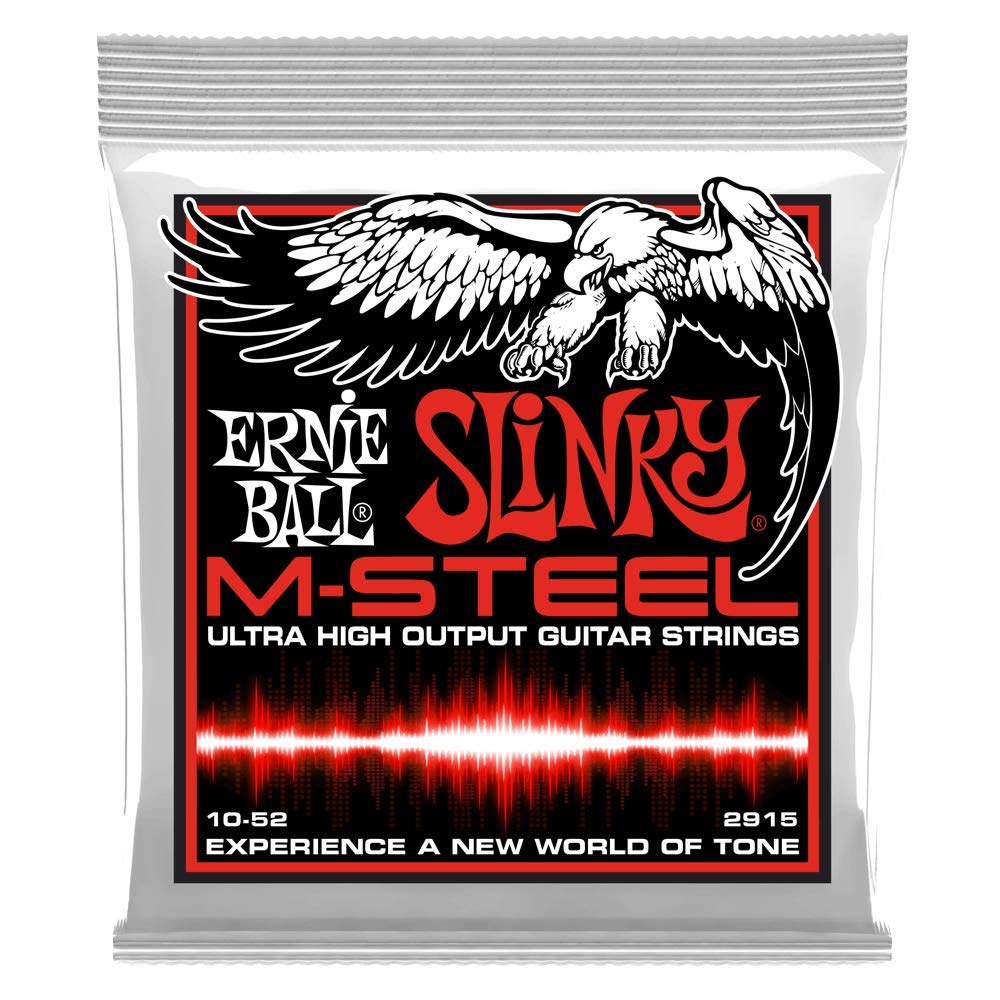
Ernie Ball Skinny Top Heavy Bottom Slinky M-Steel Electric Guitar Strings, 10-52 Gauge (P02915)
$36.09
Frequently Asked Questions
- Q: What are Ernie Ball Skinny Top Heavy Bottom Slinky M-Steel Electric Guitar Strings? A: These are electric guitar strings designed with a unique gauge combination of 10-52, featuring a skinny top for easier soloing and heavy bottom strings for powerful rhythm play.
- Q: What materials are used in these guitar strings? A: The wound strings are made from a patented Super Cobalt alloy wrapped around a Maraging steel hex core wire, while the plain strings are crafted from specially tempered steel for enhanced durability.
- Q: How do these strings enhance sound quality? A: The M-Steel construction offers superior magnetic attraction, resulting in dynamic frequency response, increased output, and a richer, fuller tone with powerful low-end response.
- Q: What is the significance of the Element Shield Packaging? A: Element Shield Packaging is designed to prolong the life of the strings and keep them fresh, ensuring optimal performance from the moment you open the package.
- Q: Where are these strings made? A: Ernie Ball Skinny Top Heavy Bottom Slinky M-Steel Electric Guitar Strings are proudly made in California, USA, using high-quality materials.
- Q: What are the gauge specifications for these strings? A: The gauges for these strings are .010 for the high E, .013 for the B, .017 for the G, .030 for the D, .042 for the A, and .052 for the low E.
- Q: Are these strings suitable for all guitar types? A: These strings are specifically designed for electric guitars and may not be suitable for acoustic or bass guitars.
- Q: How often should I change my guitar strings? A: The frequency of changing guitar strings varies based on usage, but many players recommend changing them every 1-4 weeks, depending on how often you play.
- Q: Can these strings help with tuning stability? A: Yes, the patented winding of steel around the ball end of the plain strings reduces slippage and breakage, contributing to better tuning stability.
- Q: What playing style are these strings best suited for? A: These strings are ideal for players who prefer a combination of thicker bottom strings for rhythm and lighter top strings for soloing, making them versatile for various playing styles.

